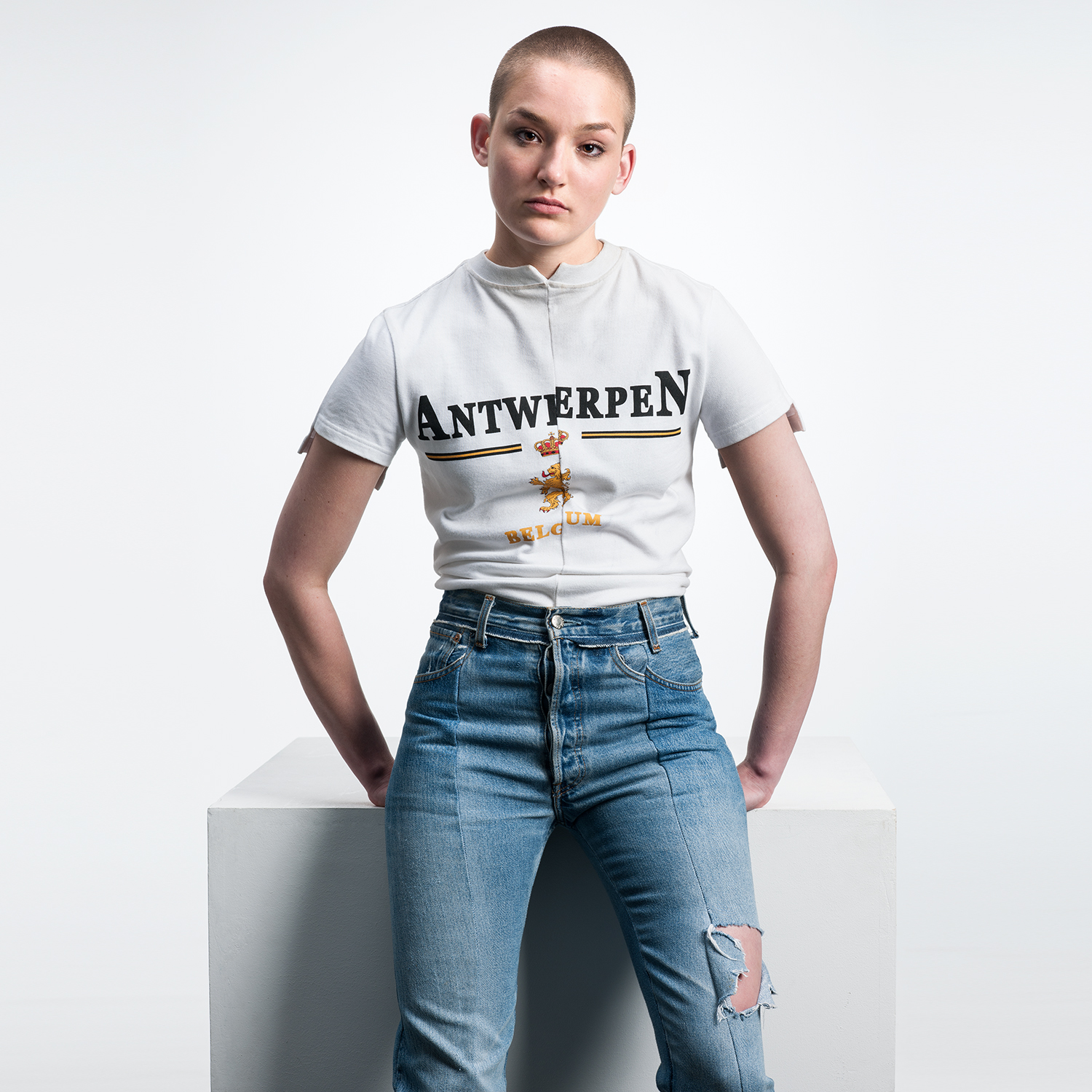Purple Magazine
— F/W 2015 issue 24
Vetements
DEMNA GVASALIA, fashion designer, Paris
interview by CAROLINE GAIMARI
photos by ARI VERSLUIS
style by LOTTA VOLKOVA ADAM
 Antwerp print cotton t-shirt and Reworked vintage jeans by VETEMENTS
Antwerp print cotton t-shirt and Reworked vintage jeans by VETEMENTS
CAROLINE GAIMARI — How is Vetements organized?
DEMNA GVASALIA — It’s really group work; it’s a very democratic creative process. Whether it concerns the choice of stores we sell in, design concepts, the choice of fabrics or colors, everyone has input. But then I filter and edit it. Someone needs to make a decision. If not, it’s chaos! We have a studio, but it’s a nightmare. We don’t have enough space. We are 15 people, and my table was taken over last week because new interns arrived. Now I have to work from home!
CAROLINE GAIMARI — How did you get started?
DEMNA GVASALIA — I started it with two friends, colleagues from a previous job…